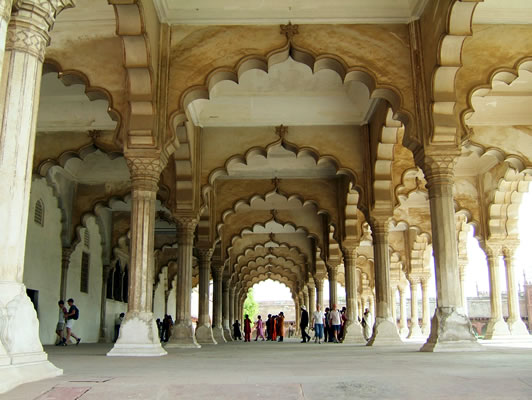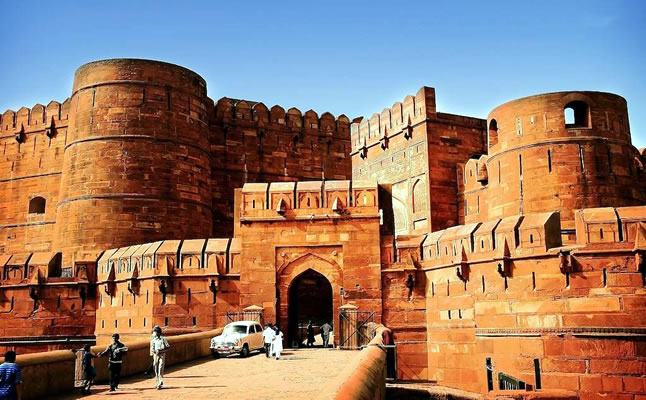| This gate originally belonged to the tomb of Mahmud Ghaznavi at Ghazni. He died in 1030 A.D. It was brought from there by the British in 1842. It was claimed, in the historic proclamation of Lord Ellenborough, the Governor-General, that these were the sandal-wood gates of Somnath which Mahmud had taken to Ghaznin in 1025, and the British had thus avenged an insult of 800 years back. This false claim was made just to win the goodwill of the Indian people. The gate is, in fact, made of local Deodar wood of Ghaznin and not of sandalwood. The style of decoration bears no resemblance to ancient gujarati wood work. There is also an Arabic inscription carved on the upper side. It mentions Mahmud with his epithets. Sir John Marshall had placed here a notice-board which described the whole episode and this gate. It is 16-1/2 feet high and 13-1/2 feet broad and its weight is about half a ton. It is made up of geometrical, hexagonal and octagonal panels which have been fixed, one with the help of the other, into the frame, without rivets. The idea to restore it at Somnath was ultimately given up and the gate was abandoned. Since then, it is stored in this room, in no way is it related to this fort, or the Mughals, and it is lying here either as a war trophy of the British Campaign of 1842, or as a sad reminder of the historic lies of the East India Co. |




